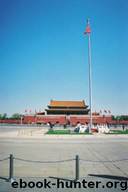China's Pearl River Delta, Guangzhou & Shenzhen by Simon Foster

Author:Simon Foster
Language: eng
Format: epub
Publisher: Hunter Publishing, Inc.
Published: 2010-06-21T16:00:00+00:00
Subway
These days many of China's major cities, including Hong Kong, Shenzhen, Guangzhou, Shanghai and Beijing, have subway systems which are sometimes known as MTRs (Mass Transit Railways) and these offer a convenient, easy and inexpensive way to get around these cities. You usually buy tickets ($2-10) from machines, which have English instructions, and stations are marked (and sometimes announced) in English. Closest subway stations are given where appropriate throughout the book.
Bus
Every Chinese city has a cheap and extensive bus network and this often forms the backbone of the urban transport system. However, the fact that destinations are generally only marked in Chinese, and that buses can be very crowded and often aren't air-conditioned makes the subway preferable where it's an option. You normally pay ($1-2) onboard and often need to have exact change. Show the driver your destination written in Chinese and, if you're lucky, he or she will give you the nod when it's time to get off. Bus numbers are given where appropriate throughout the book.
Taxi
Taxis are the easiest way to get around China's cities. Although drivers seldom speak English, as long as you have your destination written in Chinese (see the language boxes) you won't go too far wrong. Flagfall rates vary from $4 to $12.5 for the first two km (1.2 miles) and then rise in increments beyond this. Make sure that the driver uses the meter ("da biao”). In some cities you'll also find motorcycle taxis, which are a speedy way to get through the clogged city streets but it can be difficult to get a fair price – see individual chapter listings for details.
Cycle Rickshaw
China still has cycle rickshaws and pedicabs, although in some of its cities these are exclusively the preserve of tourists and you need to bargain hard before you set out on your journey. If you're in a hurry they are hardly ideal, but to soak up the pace of the city they can make a fun change. See individual cities for approximate rates.
Bicycle
Although being rapidly superseded by scooters and cars, the bicycle is the traditional mode of transport in China. In spite of modernization, China has over half a billion cycles – by far the highest ownership in the world. Although cycling around the big cities can initially seem a little daunting, there are often designated cycle lanes and, as long as you move with the masses, you'll be fine. Bikes can be rented in most cities and offer an excellent way to get around, particularly in Hangzhou, Suzhou and the countryside. Rates vary from as little as $5 for a day, to $50 an hour from some upmarket hotels.
Ferry
The cities are also often best seen from the water – Hong Kong, Shanghai, Hangzhou and Suzhou are testaments to this. Although seldom very practical (with the exception of Hong Kong's Star Ferry), ferries present a different side of the city and, if you're short of funds, they can offer a cheap alternative to a river or harbor cruise.
Download
This site does not store any files on its server. We only index and link to content provided by other sites. Please contact the content providers to delete copyright contents if any and email us, we'll remove relevant links or contents immediately.
China Rich Girlfriend by Kwan Kevin(3885)
The Silk Roads by Peter Frankopan(3752)
Annapurna by Maurice Herzog(2834)
Hot Thai Kitchen by Pailin Chongchitnant(2803)
Full Circle by Michael Palin(2764)
Okonomiyaki: Japanese Comfort Food by Saito Yoshio(2387)
City of Djinns: a year in Delhi by William Dalrymple(2131)
The Ogre by Doug Scott(2105)
Photographic Guide to the Birds of Indonesia by Strange Morten;(2086)
Tokyo by Rob Goss(2014)
Vietnam, Cambodia, Laos & Northern Thailand by Lonely Planet(2010)
Tokyo Geek's Guide: Manga, Anime, Gaming, Cosplay, Toys, Idols & More - The Ultimate Guide to Japan's Otaku Culture by Simone Gianni(1941)
Discover China Travel Guide by Lonely Planet(1860)
Everest the Cruel Way by Joe Tasker(1823)
China (Lonely Planet, 11th Edition)(1795)
Lonely Planet China(1748)
China Travel Guide by Lonely Planet(1736)
Top 10 Dubai and Abu Dhabi by DK Travel(1713)
Iranian Rappers And Persian Porn by Maslin Jamie(1706)
